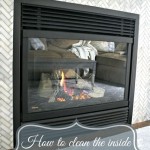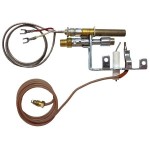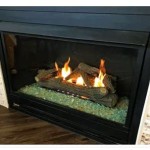What Is the Most Energy Efficient Direct Vent Gas Fireplace?
Direct vent gas fireplaces are a popular choice for homeowners seeking the ambiance and warmth of a traditional fireplace without the mess and hassle of a wood-burning unit. These fireplaces are known for their convenience, efficiency, and ease of use. While most direct vent gas fireplaces offer good efficiency, some stand out for their exceptional energy performance. Understanding the factors that influence energy efficiency and exploring the features of energy-efficient models can help consumers make an informed decision that benefits both their comfort and their budget.
Factors Determining Energy Efficiency
Several factors contribute to a direct vent gas fireplace's energy efficiency. Understanding these factors can guide consumers towards models that deliver optimal performance:
1. Burner System and Combustion Technology
The burner design and combustion technology play a crucial role in determining a fireplace's efficiency. Modern burners with advanced combustion technology, such as sealed combustion systems, optimize fuel utilization and minimize heat loss. These systems ensure complete combustion, maximizing heat output while minimizing emissions.
2. Heat Exchanger Design
The heat exchanger is responsible for transferring heat from the combustion process to the surrounding air. Efficient heat exchangers with a large surface area and optimized airflow maximize heat transfer, ensuring more of the generated heat reaches the room. Look for fireplaces with a heat exchanger made of durable materials like cast iron or stainless steel.
3. Insulation and Sealing
Proper insulation and sealing are essential for preventing heat loss from the fireplace. Well-insulated fireplaces with sealed vents and doors minimize drafts and ensure that the generated heat stays within the room. Look for fireplaces with a high-quality flue liner and properly sealed openings.
4. Blower System
A blower system can enhance a fireplace's efficiency by circulating warm air throughout the room. Efficient blower systems with adjustable speed settings allow homeowners to customize airflow and distribute heat evenly.
5. Energy Star Rating
The Energy Star program provides a recognized standard for energy-efficient appliances, including fireplaces. Look for fireplaces that have earned an Energy Star rating, indicating that they meet specific efficiency standards set by the program.
Energy-Efficient Direct Vent Gas Fireplace Features
Here are some features to look for in an energy-efficient direct vent gas fireplace:
1. Variable-Speed Blower
A variable-speed blower system allows homeowners to adjust the airflow to suit their needs. This flexibility enables them to optimize heat distribution while minimizing energy consumption.
2. Electronic Ignition
Electronic ignition systems are more efficient than traditional pilot lights, as they eliminate the constant flame that burns even when the fireplace is not in use. Electronic ignition systems save energy and reduce operating costs.
3. Thermostat
Some fireplaces feature built-in thermostats that automatically adjust the flame intensity based on the desired room temperature. This feature can enhance efficiency by ensuring that the fireplace operates only as needed, preventing unnecessary heat generation.
4. Remote Control
Remote control systems provide convenience by allowing homeowners to adjust the fireplace's settings from anywhere in the room. This feature reduces the need to manually adjust the flames, potentially saving energy and reducing wear and tear on the unit.
Making an Informed Decision
While the specific features and technologies offered by various models can vary, consumers should consider the following factors when choosing an energy-efficient direct vent gas fireplace:
1. BTU Rating
The BTU (British thermal unit) rating indicates the amount of heat a fireplace can produce. Choose a fireplace with a BTU output that matches the size of the room to avoid inefficient heat generation.
2. Installation and Maintenance Costs
Consider the installation and maintenance costs associated with the fireplace. Some models may require more complex installations, while others might have higher maintenance requirements.
3. Aesthetics and Design
Choose a fireplace that complements the design of your home and meets your style preferences. Consider factors like the fireplace's size, finish, and overall aesthetic.
By carefully evaluating these factors and considering the features of energy-efficient models, consumers can make an informed decision that maximizes their comfort and minimizes their energy consumption. Choosing an efficient direct vent gas fireplace can provide warmth, ambiance, and peace of mind, knowing their investment is both comfortable and sustainable.

How To Find The Most Efficient Direct Vent Gas Fireplace For Your Next Project

What Is A Direct Vent Gas Fireplace And How Efficient Are They

12 Types Of Gas Fireplaces You Need To Know

Gas Fireplace Faq Fireplaces Direct Learning Center

Everything You Need To Know About Gas Fireplaces Energy Trust Of Oregon

Discover The Benefits Of Direct Vent Gas Fireplaces

Benefits Of Direct Vent Fireplaces

12 Types Of Gas Fireplaces You Need To Know

Guide To Direct Vent Gas Fireplaces

Gas Fireplaces Offer Efficient Heating Choices
Related Posts








